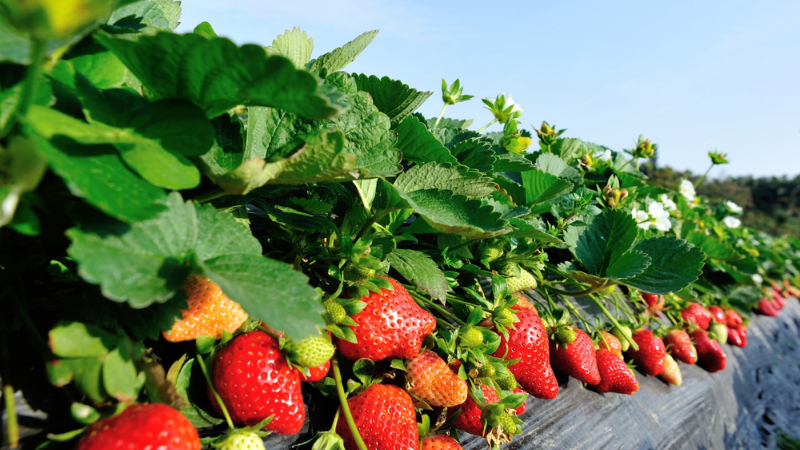Potato Growers: Be On The Lookout For New Strains Of Potato Virus Y

Newer strains of potato virus Y spread by aphids cause damage to the flesh of the tubers. Photo courtesy Washington State University
Several newly evolved strains of the disease known as potato virus Y, or PVY, have emerged and are threatening the U.S. potato industry, including potatoes grown in Washington. These new strains can render potatoes unmarketable and reduce crop yield. What’s worse is the new viruses are particularly difficult to detect with the naked eye.
“In the last five years or so that we’ve been watching this, the common PVY-O strain appears to be becoming less common and new strains, such as PVY-NO and PVY-NTN, are becoming more common,” said Washington State University (WSU) Potato Specialist Mark Pavek.
The virus is spread among potato plants by aphids. Preventive measures are typically effective against the new strains; however, potato seed growers rely on field detection to cull diseased plants and help ensure their product can be certified as healthy before it is sold to commercial farmers. If symptoms can’t be spotted in the field, the disease will spread to healthy plants.
“We used to be able to grow out samples from seed crops to visually inspect for symptoms,” Pavek said. “Now we have to rely on lab testing.”
Quick test kits have been developed and are often used to confirm the presence of the virus from a leaf sample. But since symptoms aren’t visible, growers would have to test every single plant — an expensive and impractical prospect.
Potato researchers have developed some varieties that are resistant to PVY, but they are not yet widely adopted largely because they are relatively new to the industry and processors rely on a wide mix of potato varieties for different purposes. At this point, resistant potato varieties may only fit one niche.
As part of a national effort to protect the industry and raise awareness among industry professionals, WSU recently hosted a potato virus detection workshop at its Othello, WA, Research Farm. The site is ideal for checking disease symptoms because production is earlier than many other regions of the country due to the climate, soil, and irrigation systems.
More than 130 potato growers, processors, commission members, seed certifiers, and scientists attended from 12 states, Canada, and India.

Plants infected with the original strain of PVY are difficult to see (pale center plant); however, the newer strains are virtually undetectable with the naked eye. Photo courtesy of Washington State University
“All of the major potato producing states were represented here,” Pavek said.
A field demonstration with 42 common potato varieties showed participants first-hand the difficulty in identifying plants infected with the newer virus strains.
WSU plants a commercial seed lot trial every spring at the Othello farm. The plants are visually inspected for common diseases including PVY and results are reported to the potato industry at the annual WSU Potato Field Day in June. This year, WSU planted 355 seed samples originating from different U.S. regions.
“What we’re doing here is important for the whole country and probably potato production worldwide,” said Pavek. “There’s a lot that goes into getting potatoes to the plate that people don’t see.”
The potato virus detection workshop was supported by a grant from the USDA’s National Institute of Food and Agriculture Small Crops Research Initiative. The commercial seed lot trial is funded primarily by the Washington State Potato Commission.










